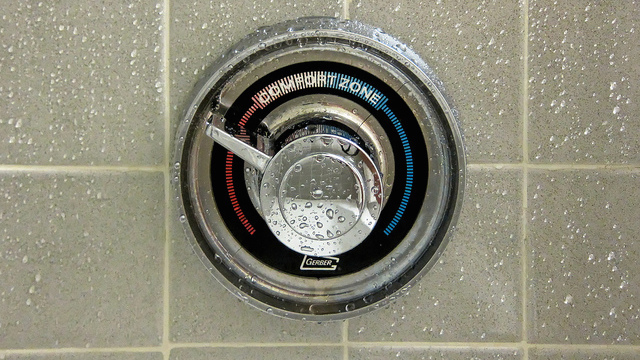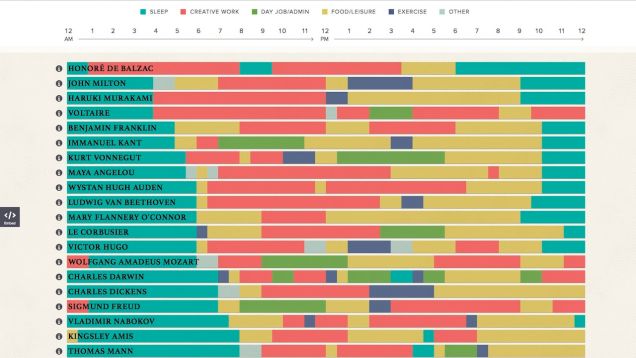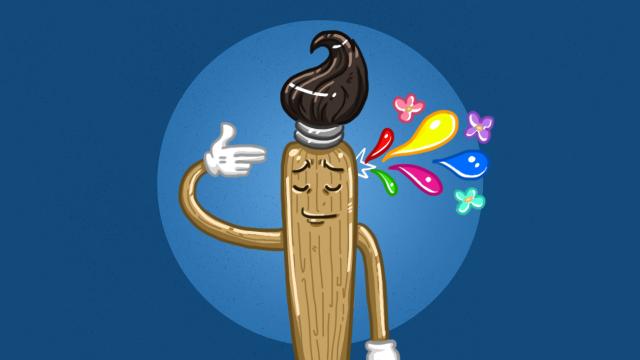We often talk about the simple things you can do to boost creativity and create more of those magical eureka moments, but many of us tend to sabotage creativity more than we cultivate it. Here are some of the self-sabotaging things you’re probably doing every day.
Photos by Tina Mailhot-Roberge, Lars Plougmann
You Beat Your Head Against A Problem Without Taking Breaks
When you get stuck on something, it’s easy to just pound your head against the problem until you break through, but science suggests that’s a terrible approach. Over the years, study after study shows that taking breaks and embracing boredom is key for generating new ideas.
Why? It’s pretty simple: when you take a break and get a little bored, that signals to your brain that you need fresh ideas, which spurs creative thinking. Call it daydreaming, letting your mind wander, or whatever else, but when your brain does it, it’s approaching problems from a new angle. When you’re bored, you want to stop being bored, and that means your brain looks for new solutions, which is why some of our best ideas come in the shower.
This happens because brains have a couple of different modes when it comes to this stuff, a “focused mode,” where you’re learning new things or working, and a “diffuse mode” where you’re more relaxed. It turns out we’re more creative when we’re in the “diffuse mode”. Various studies have shown we’re more creative in this diffuse mode, including when you’re groggy, asleep, and even a little drunk.
The same goes for breaks. A study published in the Journal of Experimental Psychology shows that something as simple as a walk can boost your creativity and other studies have suggested the same thing (exercise may help too). We’re not sure why this is the case, but walking potentially boosts your mood a little while also letting your mind wander away from work, which helps you push through those creative blocks.
Regardless of how you do it, take more breaks throughout the day. Even a nap can help boost your creative output if used correctly.
You Stay Within Your Comfort Zone And Isolate Yourself

It’s easy to get stuck in a comfort zone where you’re not experiencing anything new. While that’s helpful for efficiency, it kills your creativity in all kinds of ways. When you stick within your comfort zone, you also tend to isolate yourself from the rest of world. When you do that, you’re not creating new experiences, meeting new people, experiencing new cultures, or challenging yourself. This kills your creativity quicker than you might think.
For example, speaking with researcher Adam Galinsky, The Atlantic points out that travel and cultural immersion are key in keeping the brain mind creative:
“The key, critical process is multicultural engagement, immersion, and adaptation. Someone who lives abroad and doesn’t engage with the local culture will likely get less of a creative boost than someone who travels abroad and really engages in the local environment.” In other words, going to Cancun for a week on spring break probably won’t make a person any more creative. But going to Cancun and living with local fishermen might.
In one of Galinsky’s studies, he spoke with creative directors who lived in other countries, then rated their creative output by many different scales. The creative directors who lived overseas and immersed themselves in the culture had consistently higher rating on innovation.
Breaking out of your comfort zone for the sake of creativity is nothing new, but the key takeaway here isn’t that you should book a ticket to a foreign country every year — you just have to experience new things. It could be as simple as going into new parts of town or digging into the cultural roots of somewhere nearby. Expose yourself to new things and take the time to truly understand them. You’ll be surprised at how much more creative you’ll be.
You Emulate Others Instead Of Recognising What Works For You

We talk a lot about different people’s approaches to creativity and understanding how other creatives work is a good starting point, but it’s not the end of the conversation. As we’ve mentioned before, emulating successful people isn’t some magic bullet. Just because you’re a fan of Ernest Hemingway doesn’t mean you should start living your life by his schedule.
Schedules can be helpful, though. There’s a myth that creativity strikes out of the blue, which might seem like the case, but it doesn’t work like that. It’s more about working consistently at the times you feel most creative. You can pinpoint this time if you need to, but chances are that you already know when you’re the most creative. Schedule your day around that. Don’t look to the routines of others for anything beyond inspiration, because it’s not a one-size-fits-all approach. Just because Einstein napped a specific way at a specific time doesn’t you have to.
This idea goes well beyond just scheduling. We tend to glorify stories about creative geniuses and attempt to recreate those creative bursts for ourselves. This doesn’t work. Steve Jobs started Apple out of a garage, but that doesn’t mean that you should start a company out of yours. Don’t emulate the specifics. Instead, integrate ideas that make sense to you and your system, then move on.
You Ignore Side Projects
How many creative projects do you have sitting around right now? 10? 20? Hundreds? It makes you feel creative when you come up with these ideas, but without the follow through, they’re (mostly) useless.
Whether it’s a side project or a work project, it’s easy to sabotage yourself by not giving yourself the time to work on the project. We do this for all kinds of reasons, it might be a fear of failure or being too busy, but not working on those projects makes things worse. Research published in the European Journal of Work and Organizational Psychology points out that those creative side projects are necessary for recovery and, you guessed it, more creativity:
From a psychological perspective, it would be better if people engaged in activities in which they sought challenges and tried to match them with their skills. Evidently this also applies to work: Optimal experiences correlate positively with mental health.
However, in our society leisure is used as an “escape” from work. “Escapism” in this respect means that people do not seek meaningful leisure activities for their own growth and development, but instead resort to passive activities to escape from everyday strains and problems. Such behaviour is frequently associated with a passive lifestyle and boredom, which in turn might feed into apathy and depression.
Side projects don’t have to correlate to your other creative pursuits. The point of a side project is to nurture your brain during downtime so when you return to those other creative pursuits you have new perspectives, experiences, and ideas.
Of course, all kind of obstacles get in the way of pursuing creative side projects. In the end, it’s about forcing yourself to get started and working on those projects a little bit every day. It might not seem necessary for a creative mind, but without those side projects, your other creative work suffers.

Comments